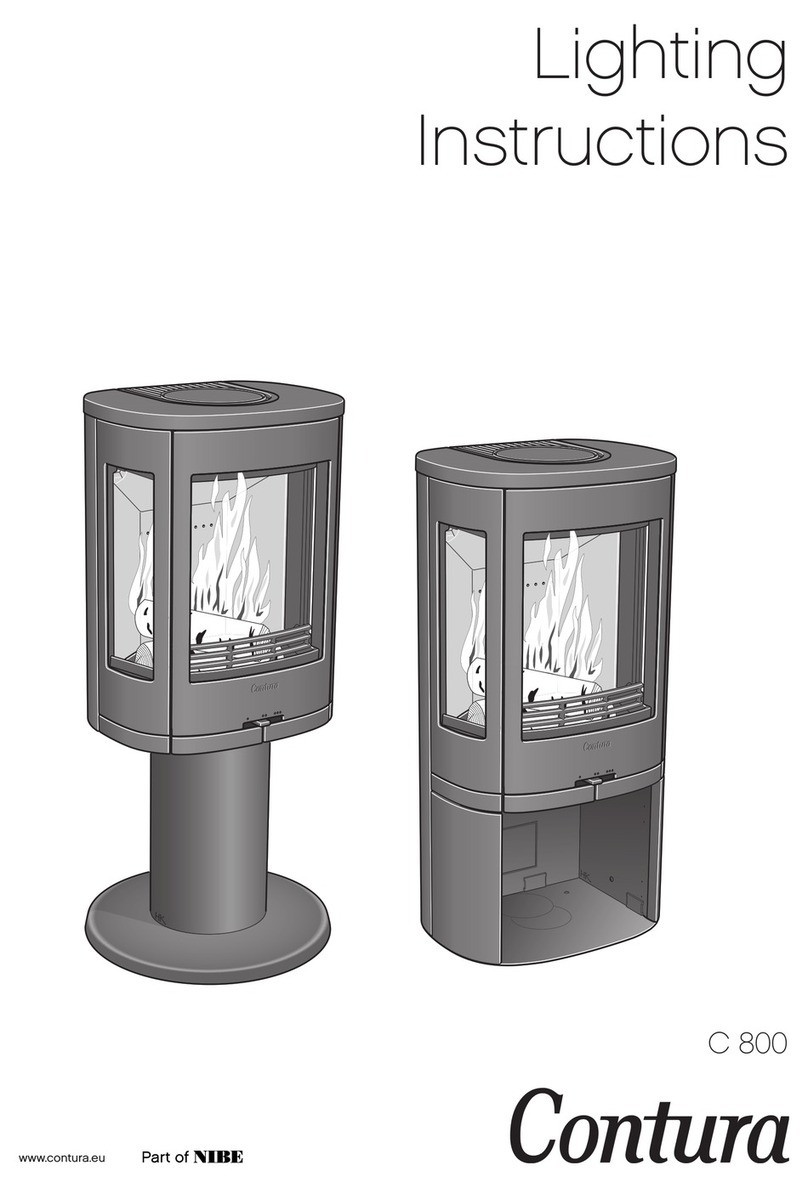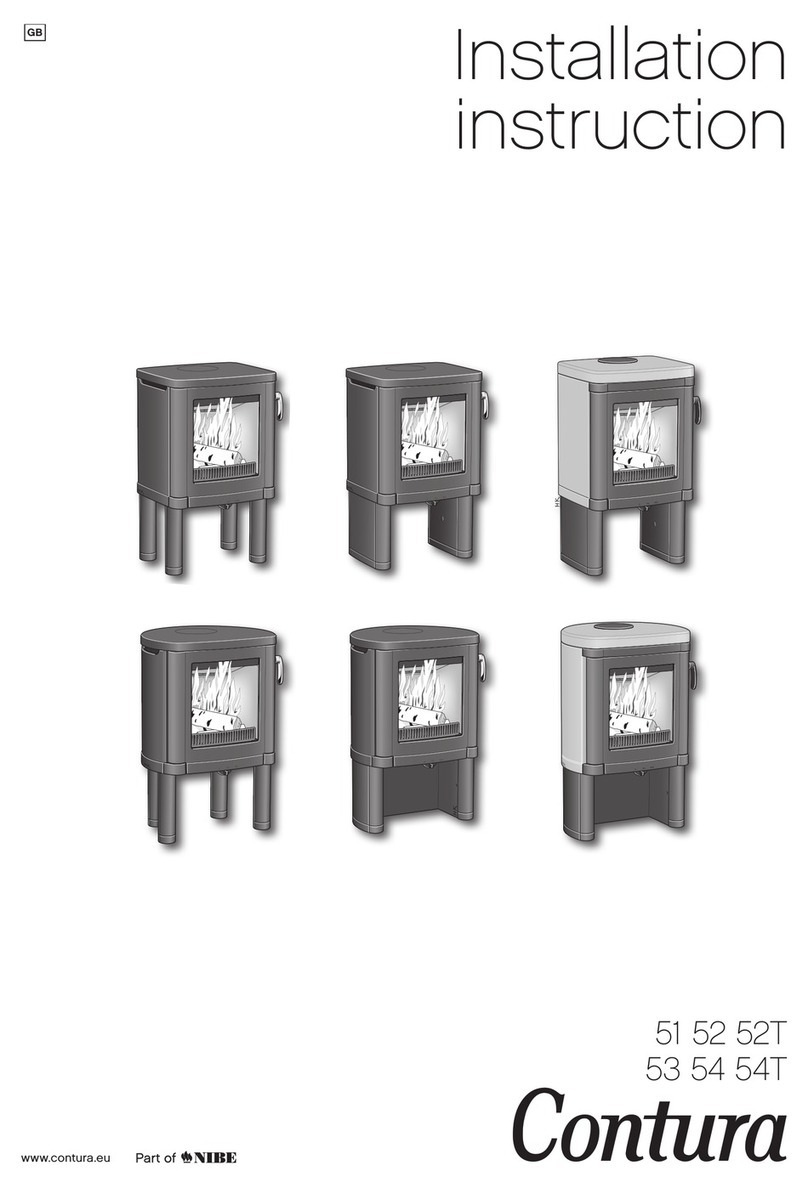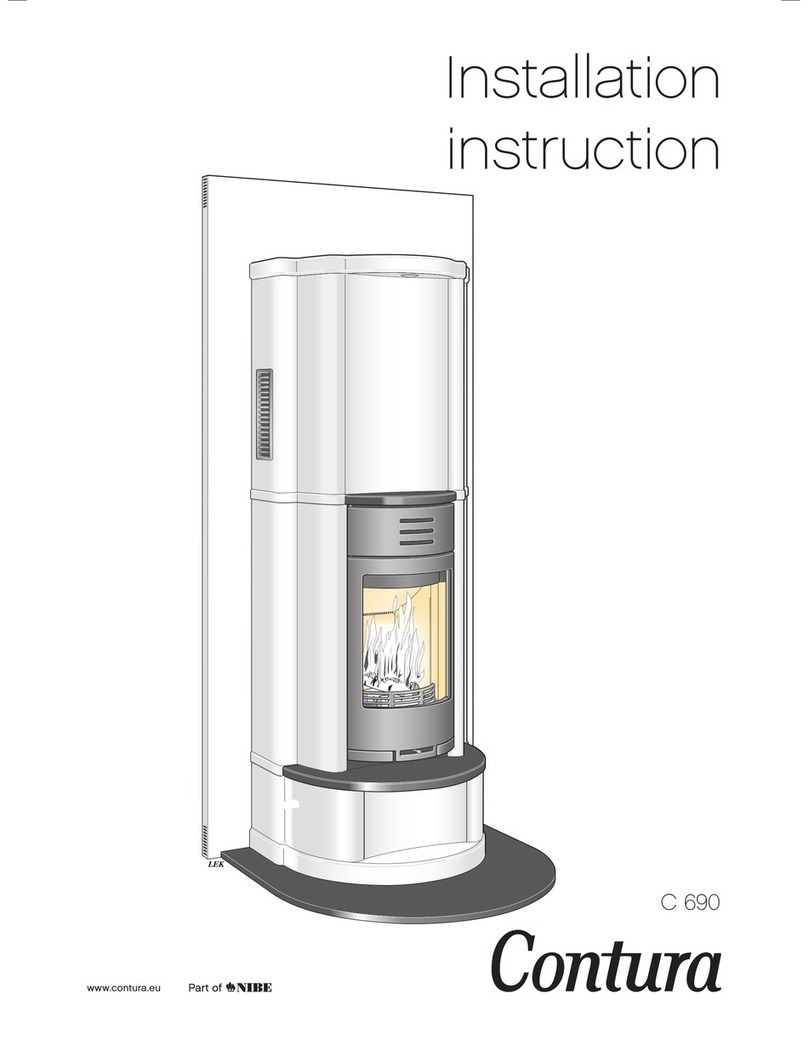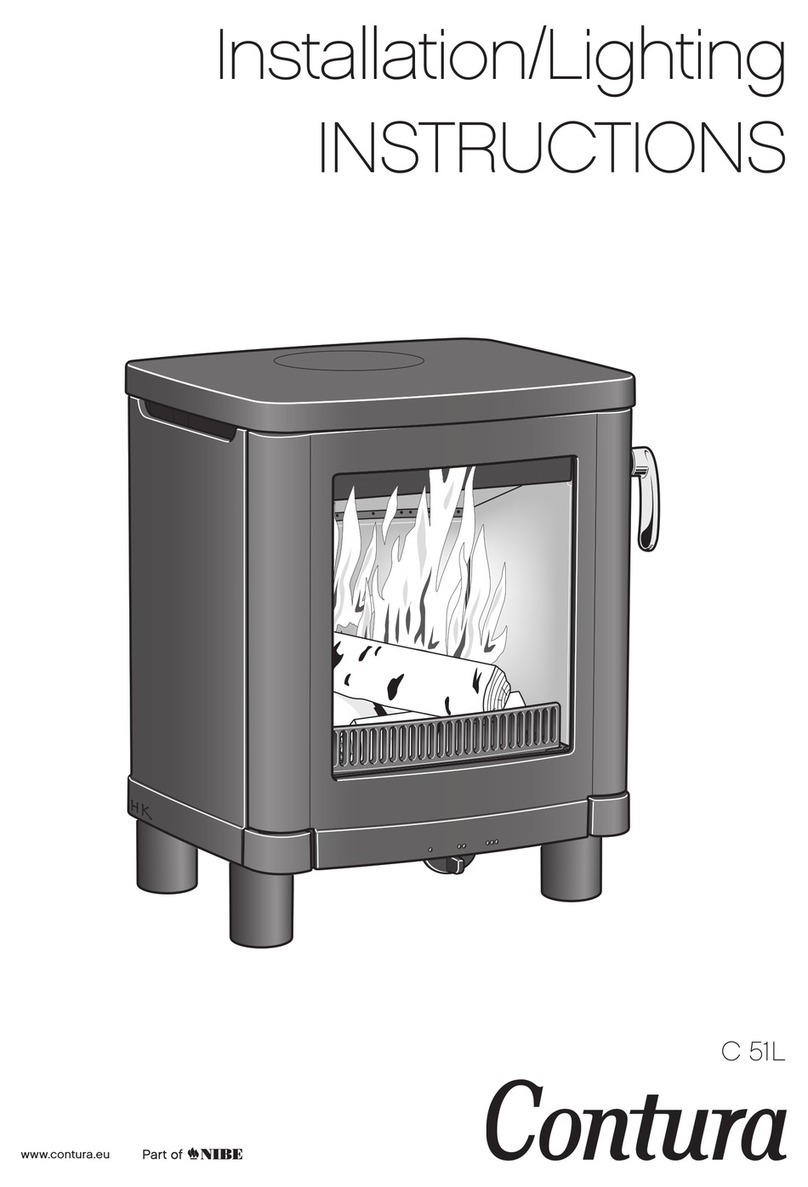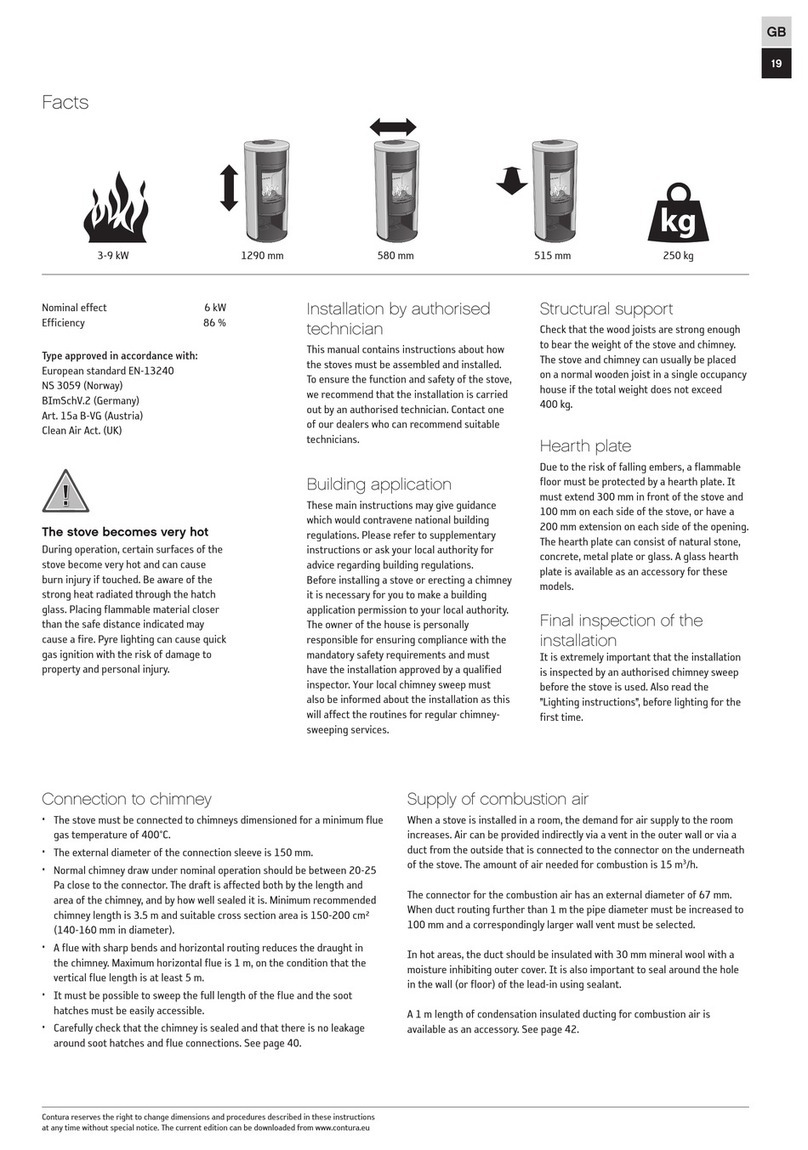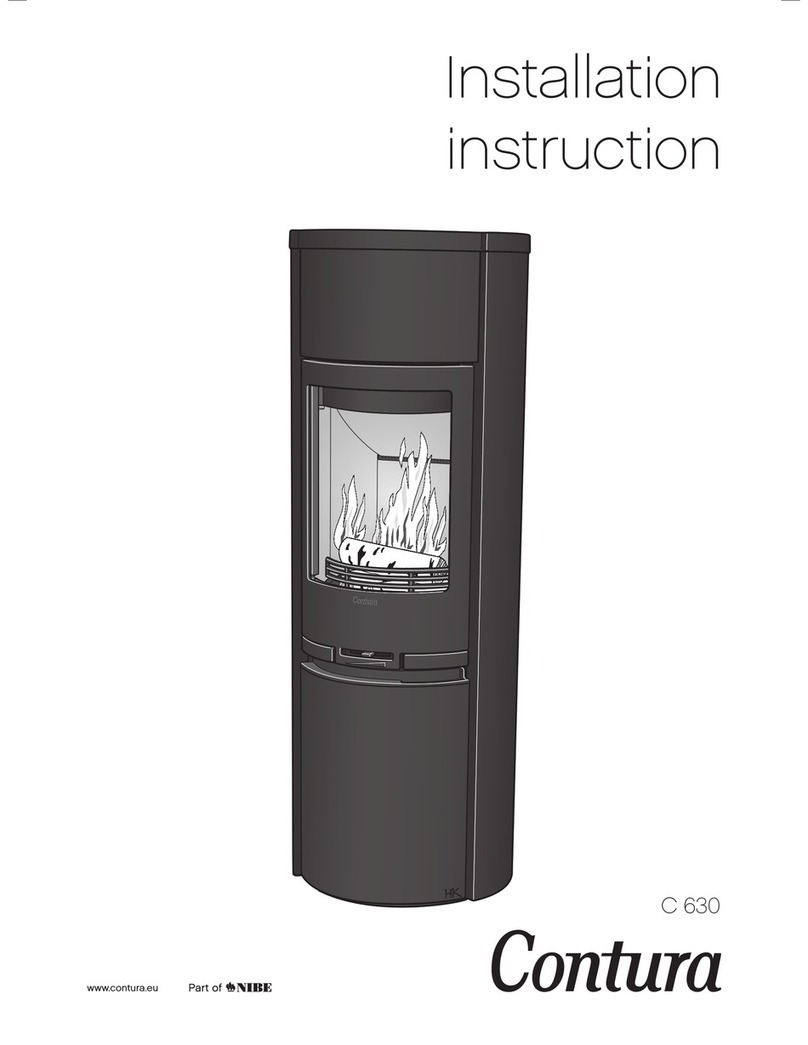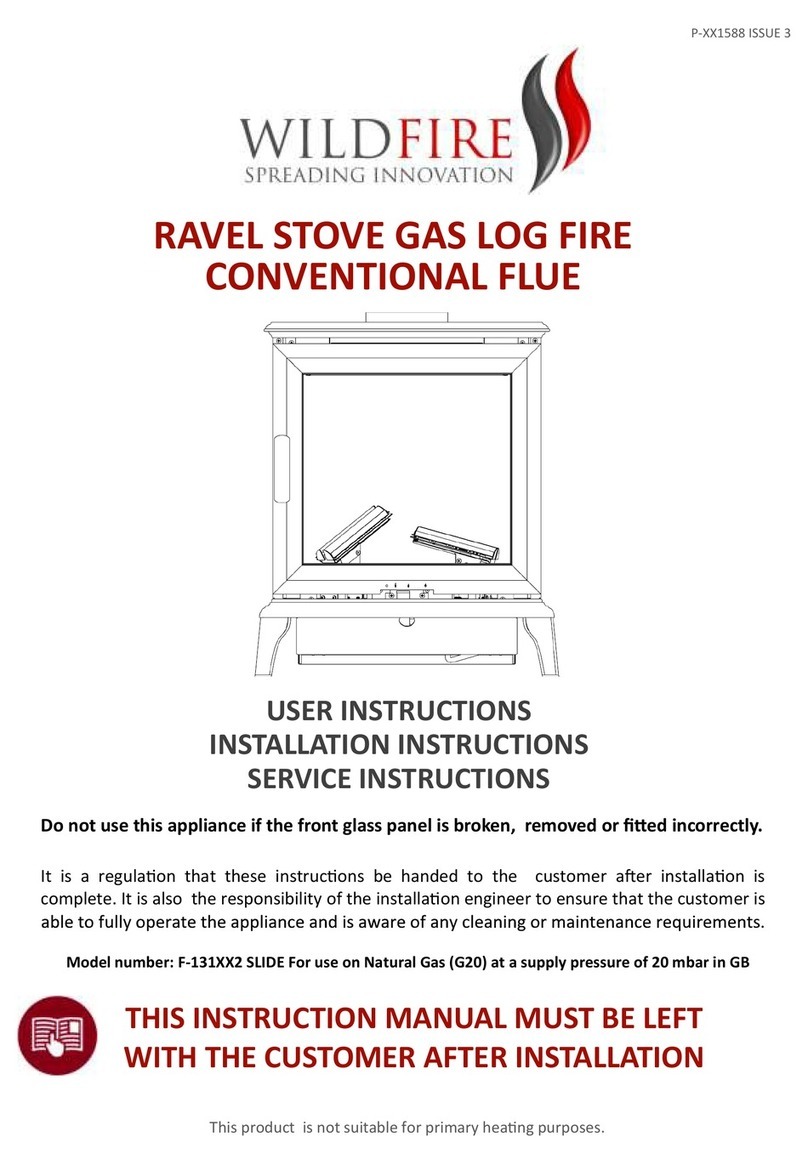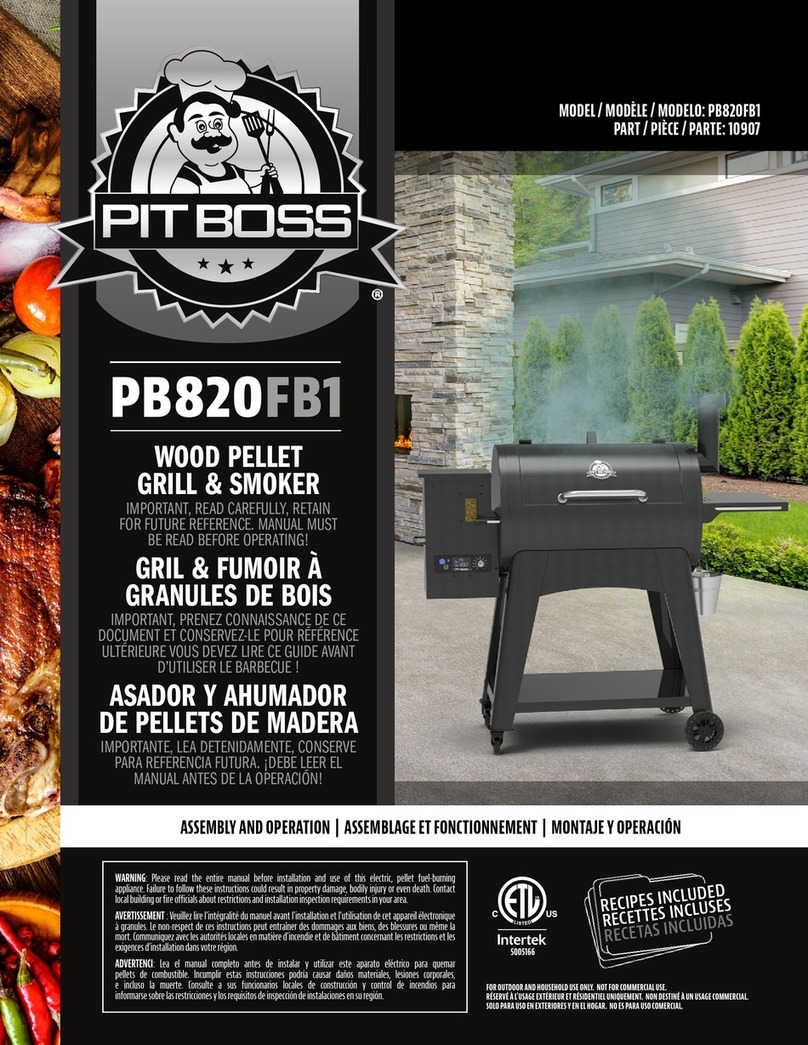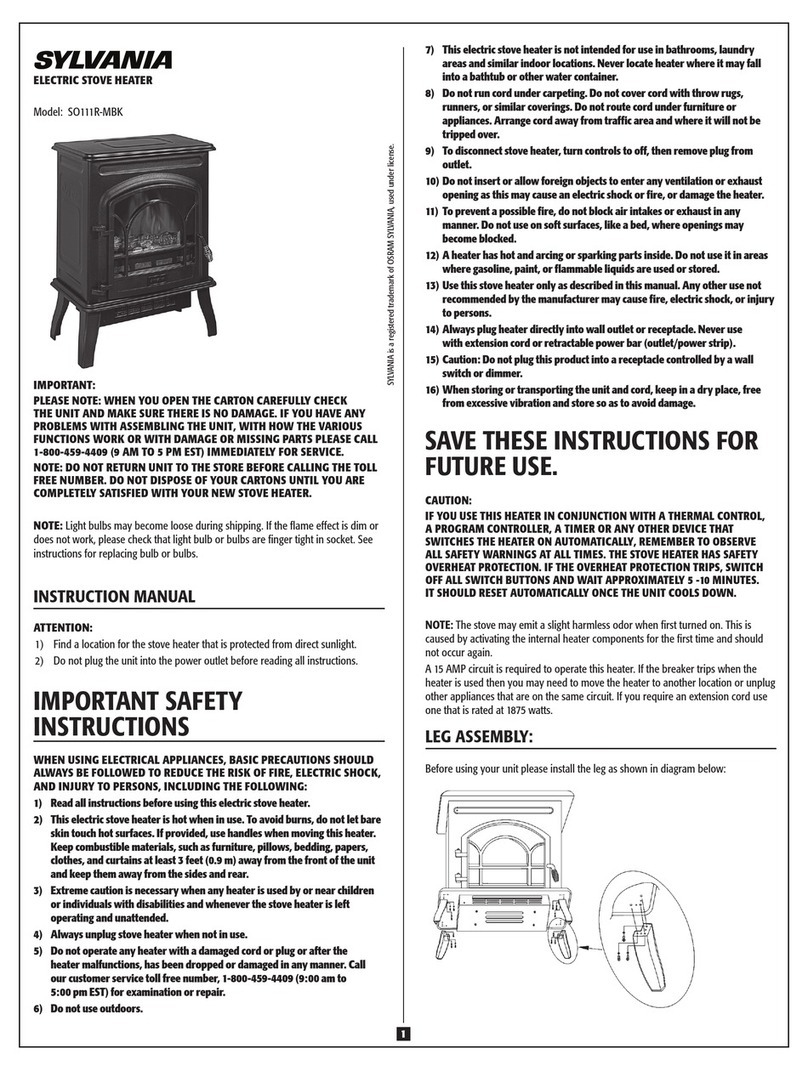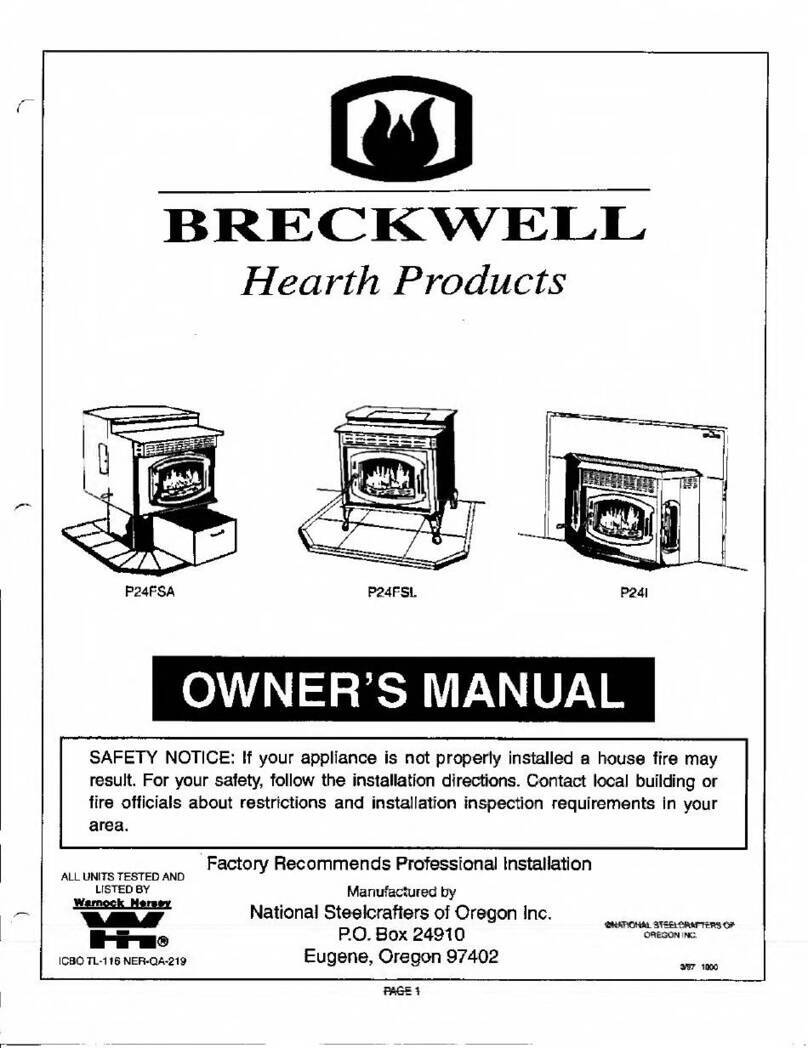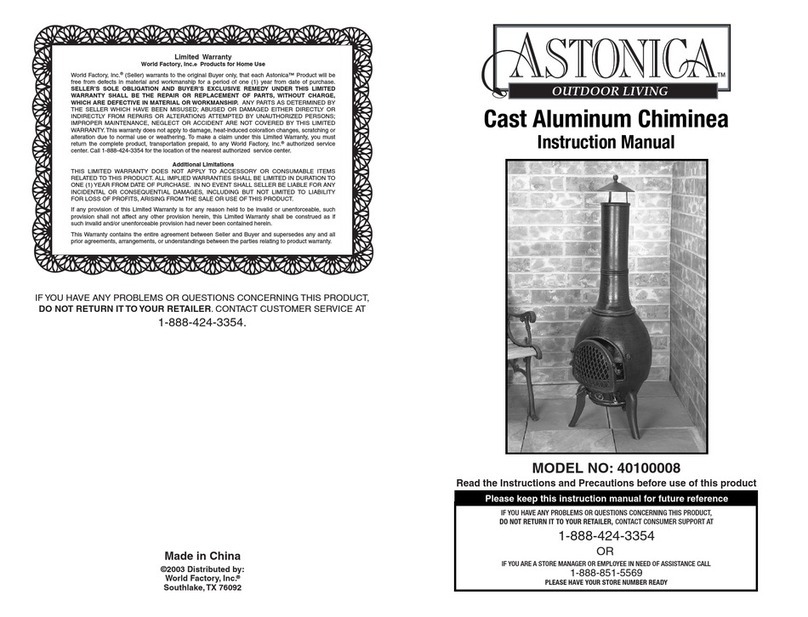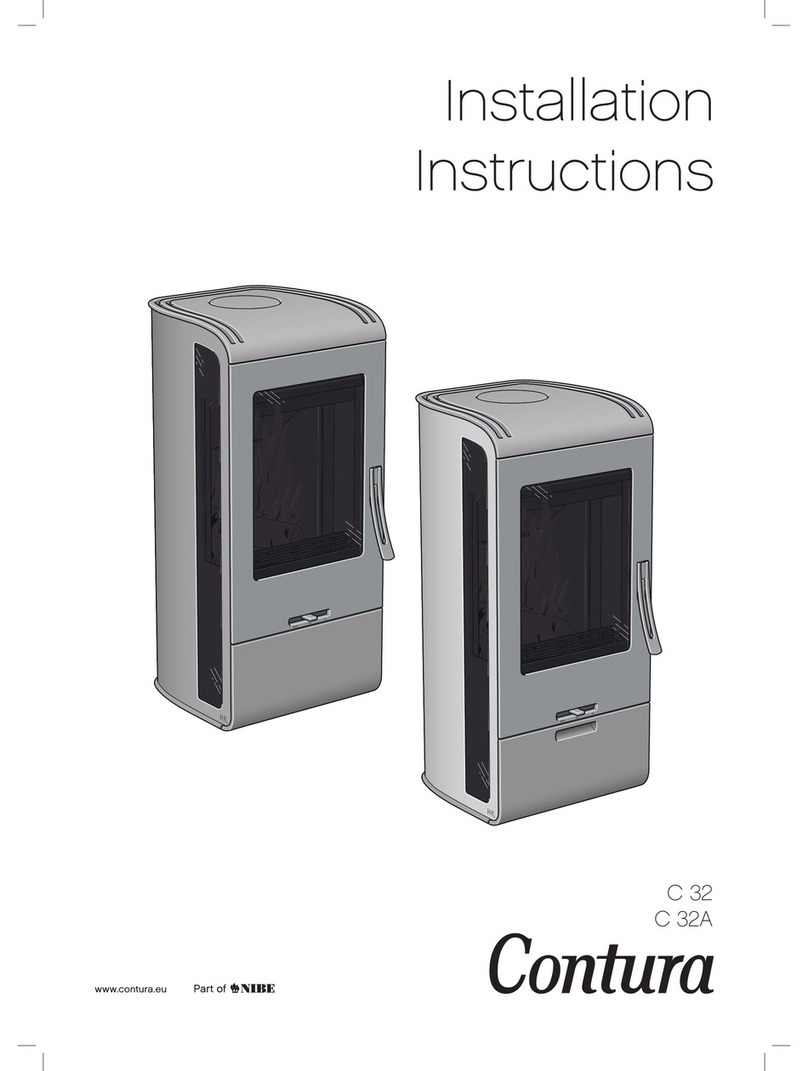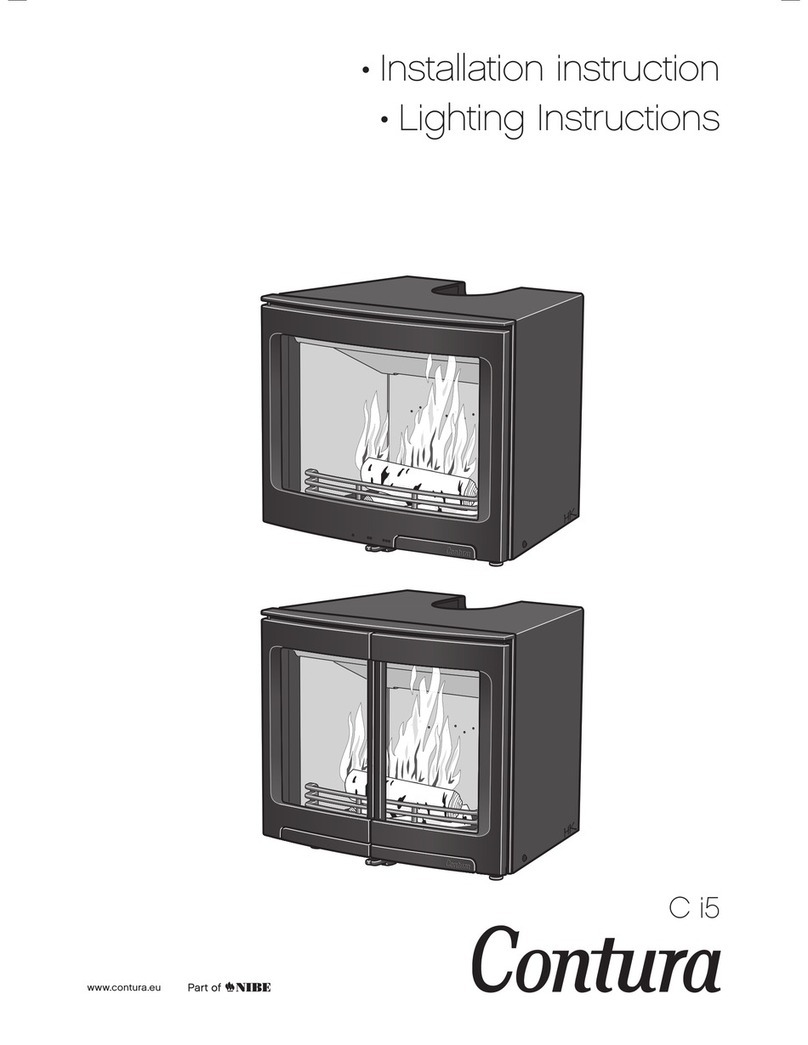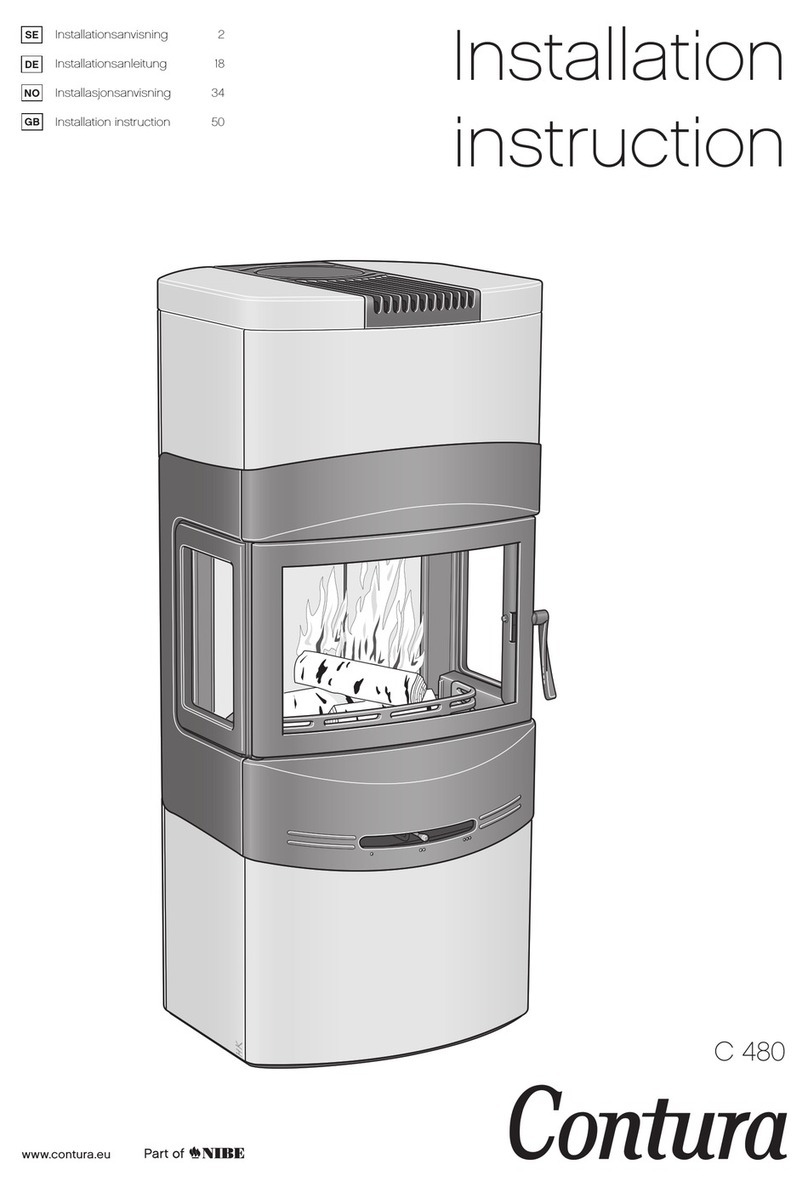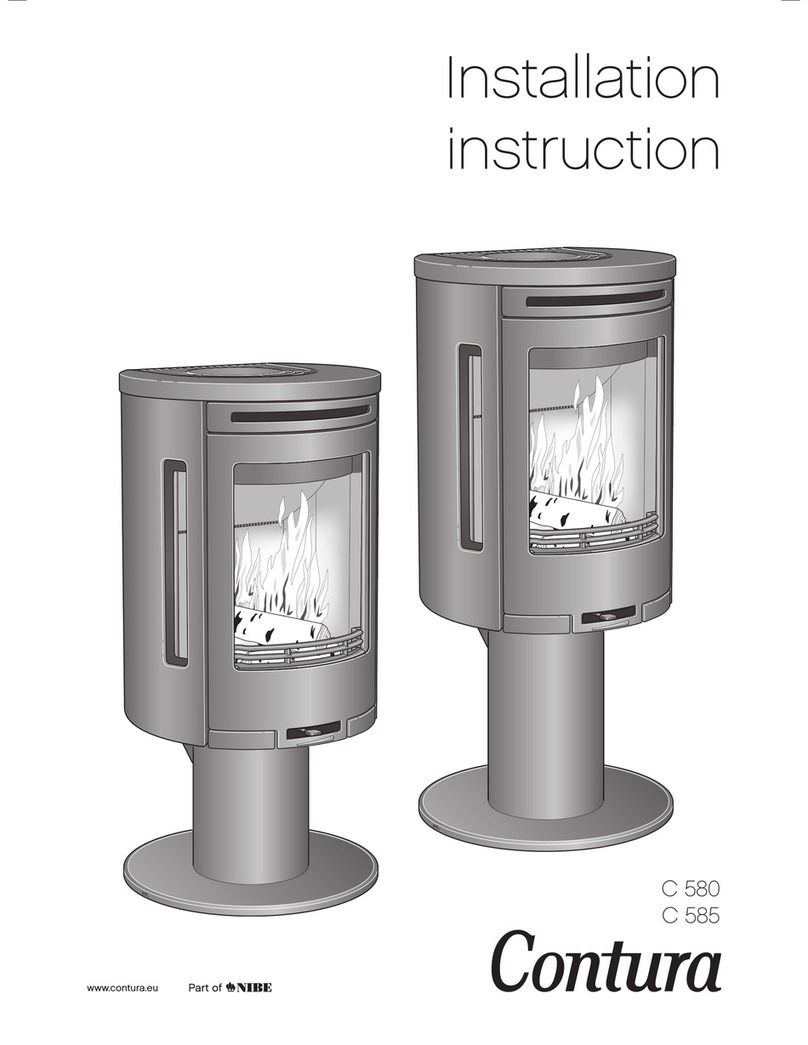GB
84
Handle
(removable on modern)
FACTS
Building application
Before installing a stove or erecting a
chimney it is necessary for you to apply
for planning permission from your local
authority. Ask your local authority for
advice regarding building regulations and
the application.
Technical data
Output 3-5 kW
Nominal output 4 kW
Efficiency level Up to 78%
Model Classic
Weight (kg) 77
Width (mm) 490
Depth (mm) 420
Height (mm) 600
Model Modern-3-sided frame
Weight (kg) 71
Width (mm) 490
Depth (mm) 380
Height (mm) 590
Model Modern-4-sided frame
Weight (kg) 72
Width (mm) 490
Depth (mm) 380
Height (mm) 635
The connector’s inner diameter is Ø126 mm
Type approved in accordance with:
European standard EN-13 229
(DE/A) DINplus, Art. 15a B-VG
RRF-29 11 2751
DEFRA exempted
The stove can be used in Smoke Control
Areas.
Fire-box insulation panels
Convection box
Grate
Ash-pan
Log guard
Type plate
Primary air
inlet control
Secondary air
inlet control
WOOD COAL
Chimney
Note! The stove installation and connection
to a chimney must be accomplished with
the current edition of Building Regulations.
We recommend that you consult a local
chimney sweep before the installation
to make sure that the chimney is in good
condition.
The stove is type approved and must be
connected to a chimney dimensioned
for at least 350°C. The connector on
the appliance is suitable for pipes with
diameter of 125 mm.
A flexible flue liner or steel flue
certified for use with solid fuel is highly
recommended. The stove requires a
draught in the chimney of at least –12
Pa. The draught is affected both by the
length and area of the chimney, and by how
well sealed it is. Minimum recommended
chimney length is 3.5 m and a suitable
cross section area is 120-175 cm² (125-
150 mm in diameter). Carefully check that
the chimney is sealed and that there is
no leakage around soot hatches and flue
connections.
Note that a flue with sharp bends and
horizontal routing reduces the draught in
the chimney. Maximum horizontal flue is 1
m, on the condition that the vertical flue
length is at least 5 m. It must be possible
to sweep the full length of the flue and the
soot hatches must be easily accessible.
General
In this manual you will find instructions
about how your Contura i4 shall be
installed. Before you start the installation
it is important that you read this
instruction carefully and fully understand
the requirements. All European, national
and local standards and regulations needs
to be fulfilled when the appliance are
installed.
To guarantee the function and safety of
the stove we recommend that it is installed
by a professional. Our Contura agents can
recommend a suitable installer.
The room or space containing a stove shall
have a permanent air supply sufficent to
ensure proper combustion, to determine
correct amount of air supply use current
edition of Building Regulations.
Remember to use only for the appliance
recommended fuel as wood logs
or smokeless fuel as anthracite or
manufactured smokeless fuel briquettes.
Do not ever burn bituminous coal, “petro-
coke” or other petroleum based fuels!

